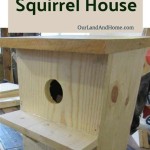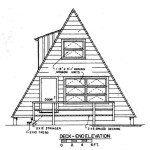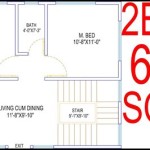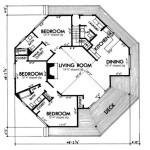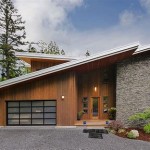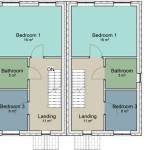Hen houses plans provide the detailed instructions and specifications necessary for constructing a suitable shelter for chickens. They encompass dimensions, materials, ventilation, and nest box designs, ensuring the health and well-being of the birds within. Designing and building a hen house requires careful consideration of factors such as climate, flock size, and egg production goals, and detailed plans offer a structured approach to achieving these objectives.
Hen houses serve as a vital part of poultry keeping, providing chickens with protection from predators, extreme weather, and the elements. They are designed to promote egg production and maintain the health and safety of the birds. By providing a safe and comfortable environment, hen houses contribute to the overall productivity and well-being of the flock.
In the following sections, we will explore various aspects of hen houses plans, including their design considerations, materials, ventilation systems, nest box construction, and additional features that enhance the functionality and comfort of these structures.
Effective hen houses plans should encompass the following key points:
- Ventilation
- Predator protection
- Nest box design
- Space requirements
- Materials
- Drainage
- Lighting
- Insulation
- Expandability
Ventilation
Proper ventilation is crucial for maintaining a healthy environment within the hen house. It helps to regulate temperature, remove moisture, and prevent the buildup of harmful gases. Inadequate ventilation can lead to respiratory problems, heat stress, and decreased egg production.
- Cross-ventilation: Designing the hen house to allow for cross-ventilation is essential. This involves placing windows or vents on opposite sides of the structure to create a flow of fresh air. Cross-ventilation helps to remove moisture and stale air, reducing the risk of respiratory issues.
- Ridge vents: Installing ridge vents along the peak of the roof allows warm, moist air to escape. Ridge vents work passively, utilizing natural convection to draw air upwards and out of the hen house.
- Adjustable vents: Incorporating adjustable vents into the hen house design enables you to control the airflow based on the weather conditions. During warm weather, the vents can be opened to increase ventilation, while during cold weather, they can be closed to minimize heat loss.
- Exhaust fans: In larger hen houses or in areas with limited natural ventilation, exhaust fans may be necessary to supplement airflow. Exhaust fans actively remove stale air and moisture from the hen house, helping to maintain a healthier environment.
Adequate ventilation is essential for the well-being of the flock and the overall productivity of the hen house. By incorporating proper ventilation strategies into the hen houses plans, you can create a comfortable and healthy environment for your chickens.
Predator protection
Protecting chickens from predators is a crucial aspect of hen houses plans. Predators can pose a significant threat to the flock, causing injury, death, and financial loss. Incorporating effective predator protection measures into the design of the hen house is essential for safeguarding the well-being of the birds.
- Elevated design: Elevating the hen house off the ground helps to deter ground-based predators such as foxes and coyotes. Placing the structure on posts or a concrete slab creates a physical barrier that makes it more difficult for predators to access the chickens.
- Predator-proof fencing: Surrounding the hen house with predator-proof fencing is essential for keeping predators out. The fencing should be made of sturdy materials such as welded wire or chain link and buried underground to prevent predators from digging beneath it.
- Secure doors and windows: All doors and windows should be securely latched and locked when not in use. Predators can easily exploit any weaknesses in the structure, so it is important to ensure that all access points are adequately protected.
- Motion-activated lighting: Installing motion-activated lighting around the hen house can deter predators by startling them and making them feel exposed. The sudden burst of light can also alert you to the presence of predators, allowing you to take appropriate action.
By incorporating these predator protection measures into hen houses plans, you can create a safer environment for your chickens and reduce the risk of attacks from predators.
Nest box design
Nest boxes are an essential component of hen houses plans, providing chickens with a private and secure place to lay their eggs. Proper nest box design contributes to egg production, egg quality, and the overall well-being of the flock.
- Number of nest boxes: The number of nest boxes required depends on the size of the flock. As a general rule, you should provide one nest box for every four to five hens. Having an adequate number of nest boxes helps to prevent overcrowding and competition among the hens.
- Nest box size: The size of the nest boxes should be large enough to accommodate the hens comfortably while they are laying eggs. A good rule of thumb is to provide a nest box that is approximately 12 inches wide, 12 inches deep, and 18 inches high.
- Nest box location: Nest boxes should be placed in a quiet, dark, and well-ventilated area of the hen house. Avoid placing nest boxes near doors or windows, as drafts and disturbances can discourage hens from using them.
- Nest box material: Nest boxes can be made from a variety of materials, such as wood, plastic, or metal. Wood is a popular choice because it is a good insulator and can be easily cleaned and disinfected.
Proper nest box design is essential for encouraging egg production and maintaining the health and well-being of the flock. By incorporating these considerations into hen houses plans, you can create an optimal nesting environment for your chickens.
Space requirements
Determining the appropriate space requirements for hen houses is crucial for the well-being and productivity of the flock. Overcrowding can lead to stress, health issues, and decreased egg production, while providing insufficient space can hinder the hens’ natural behaviors and comfort.
The amount of space required in hen houses plans depends on several factors, including the size of the flock, the breed of chickens, and the intended purpose of the structure. As a general guideline, it is recommended to provide approximately 4 square feet of floor space per bird. This space includes both the indoor and outdoor areas available to the chickens.
For larger flocks, additional space may be necessary to prevent overcrowding and promote the hens’ well-being. Breeds of chickens that are known for being more active and flighty may also require more space to roam and exercise. If the hen house is intended for raising chicks or breeding stock, additional space should be allocated to accommodate their specific needs.
When designing hen houses plans, it is important to consider the vertical space as well as the floor space. Chickens naturally roost on elevated perches, so providing adequate perching space is essential for their comfort and well-being. Multi-level structures or the inclusion of roosting bars can help to maximize the available space and create a more stimulating environment for the flock.
Materials
Selecting the appropriate materials for hen houses plans is essential for ensuring the durability, functionality, and well-being of the structure. The choice of materials depends on various factors, including climate, budget, and personal preferences. Here are some commonly used materials for hen houses:
Wood: Wood is a popular choice for hen houses due to its natural insulating properties and ease of construction. Cedar, redwood, and pine are commonly used woods for hen houses because they are naturally resistant to rot and decay. However, wood requires regular maintenance, such as painting or staining, to protect it from moisture and pests.
Metal: Metal is another durable option for hen houses, particularly in areas with extreme weather conditions. Galvanized steel or aluminum are commonly used metals for hen houses because they are resistant to rust and corrosion. Metal hen houses are relatively easy to clean and maintain, but they can be more expensive than wood structures.
Plastic: Plastic is a lightweight and affordable material that is becoming increasingly popular for hen houses. Recycled plastic lumber is a sustainable option that is resistant to rot, moisture, and pests. Plastic hen houses are easy to clean and maintain, but they may not be as durable as wood or metal structures.
Other materials: In addition to the materials mentioned above, other materials such as concrete, brick, and straw bales can also be used for hen houses. The choice of materials ultimately depends on the specific needs and preferences of the chicken keeper.
When selecting materials for hen houses plans, it is important to consider factors such as insulation, ventilation, and ease of cleaning. The materials should be able to withstand the elements and provide a comfortable and healthy environment for the chickens.
Drainage
Proper drainage is crucial in hen houses plans to prevent moisture buildup, which can lead to health issues for the chickens and damage to the structure itself. Here are some key considerations for drainage:
- Sloped floors: Designing the hen house floor with a slight slope allows water to drain away from the interior and prevents pooling. A slope of approximately 1 inch per 8 feet is recommended.
- Drainage holes: Incorporating drainage holes in the floor of the hen house allows water to escape and prevents the buildup of moisture. These holes should be covered with a wire mesh to prevent the chickens from accidentally falling through.
- Guttering and downspouts: Installing guttering and downspouts on the roof of the hen house helps to redirect rainwater away from the structure and prevent moisture from seeping into the walls or foundation.
- Adequate ventilation: Ensuring proper ventilation in the hen house helps to reduce moisture levels by allowing fresh air to circulate and remove excess humidity.
By incorporating these drainage considerations into hen houses plans, you can create a drier and healthier environment for your chickens, reducing the risk of moisture-related health issues and structural damage.
Lighting
Lighting plays a crucial role in hen houses plans, affecting the chickens’ health, egg production, and overall well-being. Proper lighting can help regulate the hens’ circadian rhythm, stimulate egg laying, and create a more comfortable environment for the flock.
Natural light: Natural light is the most beneficial type of lighting for chickens. It provides the full spectrum of light that the chickens need for optimal health and development. Hen houses should be designed to allow ample natural light to enter the interior. Windows or skylights can be incorporated into the plans to maximize natural lighting. However, it is important to avoid direct sunlight during the hottest part of the day, as this can lead to heat stress in the chickens.
Artificial light: Artificial lighting may be necessary to supplement natural light during the shorter winter days or in regions with limited sunlight. Artificial light can be provided using incandescent bulbs, fluorescent bulbs, or LED lights. LED lights are becoming increasingly popular due to their energy efficiency and longer lifespan. The intensity and duration of artificial light should be carefully controlled to mimic the natural daylight cycle and avoid disrupting the hens’ circadian rhythm.
Lighting schedule: The lighting schedule in hen houses should be designed to provide the chickens with approximately 14-16 hours of light per day. This mimics the natural daylight cycle and helps to stimulate egg production. During the winter months, artificial light may need to be supplemented to maintain the desired lighting duration. It is important to gradually increase and decrease the light exposure to avoid shocking the chickens and disrupting their laying cycle.
Light intensity: The intensity of light in the hen house should be sufficient to allow the chickens to see and move around comfortably, but not so bright that it causes stress or discomfort. A light intensity of around 10-15 lux is generally recommended for hen houses.
Insulation
Insulation plays a crucial role in hen houses plans, helping to maintain a comfortable and healthy environment for the chickens, particularly in extreme weather conditions. Proper insulation can help to regulate temperature, reduce energy costs, and prevent condensation, which can lead to respiratory problems in chickens.
- Temperature regulation: Insulation helps to maintain a consistent temperature inside the hen house, regardless of the outside temperature. During cold weather, insulation prevents heat loss, keeping the chickens warm and comfortable. Conversely, during hot weather, insulation helps to keep the hen house cool by preventing heat from entering from the outside.
- Energy efficiency: A well-insulated hen house requires less energy to heat or cool, resulting in lower energy costs for the chicken keeper. This is especially important in regions with extreme temperatures, where heating and cooling costs can be significant.
- Condensation prevention: Insulation helps to prevent condensation by reducing the temperature difference between the inside and outside of the hen house. Condensation can lead to dampness, mold growth, and respiratory problems in chickens. Proper insulation helps to keep the hen house dry and well-ventilated, creating a healthier environment for the flock.
- Materials and methods: Various insulation materials can be used in hen houses plans, including fiberglass batts, cellulose insulation, and spray foam insulation. The choice of material depends on factors such as cost, availability, and ease of installation. Insulation can be installed in the walls, ceiling, and floor of the hen house to achieve optimal temperature regulation and energy efficiency.
By incorporating proper insulation into hen houses plans, chicken keepers can create a more comfortable and healthy environment for their flock, reduce energy costs, and prevent condensation-related problems.
Expandability
Expandability is a crucial consideration in hen houses plans, especially for chicken keepers who plan to increase their flock size or add new features to their setup in the future. Designing a hen house with expandability in mind allows for easy modifications and additions, ensuring that the structure can adapt to changing needs and circumstances.
One aspect of expandability is the ability to increase the size of the hen house. This can be achieved by designing the structure with modular components that can be easily added or removed as needed. For example, a hen house can be built with a base unit that can be extended with additional sections or wings to accommodate a larger flock.
Another aspect of expandability is the ability to add new features or modify the existing ones. This could include adding a nesting box addition, a run extension, or a ventilation system. By incorporating flexible design elements into hen houses plans, chicken keepers can easily adapt the structure to meet their evolving needs without having to build a completely new hen house.
Expandability is also important for chicken keepers who may want to repurpose the hen house in the future. For example, a hen house can be designed with features that allow it to be easily converted into a storage shed or a workshop once the chickens are no longer being kept.
When designing a hen house with expandability in mind, it is important to consider the overall layout and construction methods. Using standardized components and modular design principles can make it easier to add or remove sections and modify the structure as needed. Additionally, planning for future expansion allows chicken keepers to choose materials and construction techniques that will facilitate future modifications.
:max_bytes(150000):strip_icc()/free-chicken-coop-plans-1357113_FINAL-c325847e0d34457ab8629c01bd5d9981-5b92d7a6fc7344bca544d6767f15c094.png)









Related Posts

